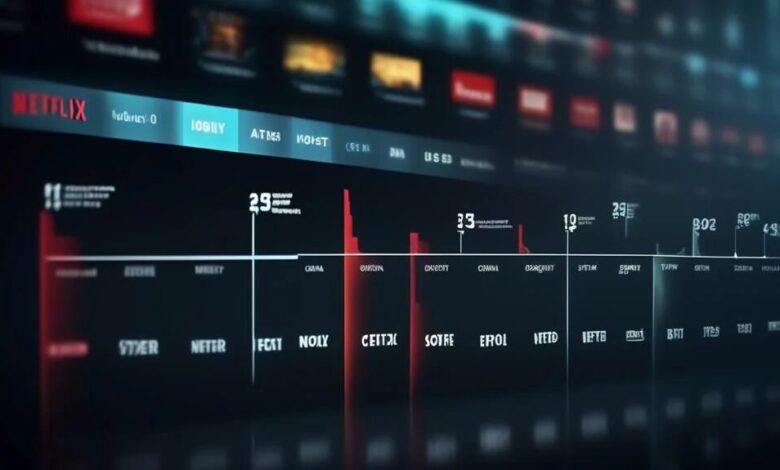Exploring the Evolution of On-Demand Entertainment: How Streaming Services Shape Our Viewing Habits

Key Takeaways:
- The transition from traditional TV to streaming has greatly affected viewer behavior and expectations.
- Personalization of viewing content through algorithms offers tailored experiences, enhancing user engagement.
- Binge-watching culture has emerged as a new norm, impacting how audiences interact with series and films.
- Streaming services’ focus on original content creation is defining the next era of entertainment media.
- Future trends in the streaming industry include advanced technology integration and evolving business models.
Table of Contents
- The Rise of Streaming Services
- Streaming Versus Cable: A Comparative Analysis
- Personalization and Algorithms: The Role in Consumer Choices
- Binge-Watching Culture and Its Effects
- Making Room for Niche Audiences
- The Global Impact of Streaming
- Original Content and Exclusive Series
- Addressing the Digital Divide: Accessibility and Streaming
- Future Trends in On-Demand Entertainment
- Streamline Your Entertainment: Making the Most of Streaming Services
The Rise of Streaming Services
With the digital revolution reshaping the entertainment industry, the proliferation of streaming services marks a pivotal shift in media consumption. Paramount+ is now one of the platforms that set the standard for affordability through discounts, promo codes, and instant access to a treasure trove of films, series, and documentaries. This seismic shift from scheduled programming to on-demand viewing has significantly influenced consumer expectations, placing control squarely in the hands of the viewer. The convenience of streaming services has cultivated a cultural expectation of immediacy and variety that traditional broadcasting now struggles to match. The implications extend well beyond convenience, influencing industry content production and distribution models. As streaming becomes the norm, major studios and networks are reconsidering their strategies to adapt to this new landscape.
Streaming Versus Cable: A Comparative Analysis
Debating the merits of streaming services against traditional cable presents a compelling case for the modern viewer. Streaming platforms offer a more customizable and often cost-effective alternative where cable companies package channels into fixed tiers. Users can sculpt their subscriptions to their taste and budget, adding and removing services efficiently—an agility cable package lacks. Streaming platforms frequently update their content libraries and offer exclusive shows and movies that keep their offerings fresh and attractive to subscribers.
A detailed analysis of the cost differences reveals that streaming services often deliver more value per dollar when juxtaposed with cable subscriptions. As the debate continues, consumers are increasingly swayed by streaming options’ versatility and competitive pricing. A study goes as far as to argue that streaming is still a better deal than cable, considering the broad range of content availability and the continuously evolving nature of streaming platforms.
Personalization and Algorithms: The Role in Consumer Choices
Streaming services stand apart in their content libraries and ability to tailor the user experience. Algorithms track viewing preferences and suggest content that aligns with the user’s established tastes. This personalization creates an intuitive and profoundly engaging viewing experience. Yet, the inherent nature of these algorithms can also inadvertently narrow viewers’ exposure, reducing the diversity of content consumed and reinforcing a loop of similar genres and themes. Despite such concerns, streaming platforms’ sophisticated algorithms play a crucial role in content discovery, shaping viewers’ tastes and potentially creating new viewing trends.
Binge-Watching Culture and Its Effects
Binge-watching has evolved from a novel concept to a widely accepted way of experiencing television. With their full-season releases, streaming platforms allow audiences to immerse themselves in narrative worlds without interrupting week-long waits. This new norm has redefined the very fabric of series storytelling, as creators now often design shows with binge-watching in mind, crafting episodes that are compelling when viewed in succession. While binge-watching satisfies the desire for instant narrative gratification, it also poses challenges, such as increased screen time and the potential for diminished social interaction. Critics of the trend also express concern about how it might affect long-term memory retention of the content and the traditional model of episodic anticipation.
Making Room for Niche Audiences
An advantage of streaming services that is often celebrated is their ability to cater to niche interests. These platforms, which cater to a wide range of specialized tastes, have given rise to new prospects for content creators and the representation of voices and stories that might not be suitable for mainstream media. It broadens the cultural conversation and fosters an inclusive environment where varied perspectives can flourish. Focusing on niche markets enables streaming platforms to develop deeply engaged communities around specific genres or interests, leveraging loyalty and word-of-mouth to bolster their user base. This dynamic has enriched the media landscape and redefined what it means to be a successful entertainment platform in the digital age.
The Global Impact of Streaming
The democratization of content through streaming platforms has yielded an unprecedented global impact. What once were regional shows can now become global sensations overnight, signaling a new era of international storytelling and cross-cultural exchange. However, this dissolving of geographical boundaries is challenging as it necessitates nuanced localization efforts and sensitivity to cultural norms.
Additionally, the diffusion of global content has implications for local industries and cultural preservation, raising important questions about global homogenization and the role of streaming services in shaping cultural identities worldwide.
Original Content and Exclusive Series
The allure of original programming has become a key differentiator in the streaming industry. Services aggressively seek to expand their catalogs with exclusive offerings, investing vast resources into developing original series and films. This trend follows the realization that unique, high-quality content can drive subscriptions and build brand identity in a crowded marketplace. Exclusive content has become a significant draw for viewers and sparked a new wave of creativity within the industry. Writers, directors, and actors are exploring fresh, genre-bending ideas that may have yet to find a home in the traditional broadcast model, ultimately pushing the envelope of what is possible in episodic storytelling.
Addressing the Digital Divide: Accessibility and Streaming
While streaming services have become a staple of entertainment for many, a significant digital divide persists. This divide—stemming from disparities in internet access, technology, and digital literacy—impedes the ability of all audiences to engage with streaming content. In facing this challenge, industry leaders and governments must collaborate to implement initiatives that expand broadband reach, affordability, and digital education—thereby ensuring that the fruits of digital innovation do not remain out of reach for underrepresented and underserved communities.
Future Trends in On-Demand Entertainment
The streaming industry is primed for further innovation. With technology continually evolving, we may soon witness the integration of immersive experiences, such as virtual and augmented reality, into streaming services. These advances promise to redefine interaction with content and open up new avenues for storytelling.
Moreover, as sustainability concerns are raised about the current model, with its extensive content libraries and intense competition, future trends will likely address industry consolidation, business sustainability, and creative ways to enhance viewer retention, ensuring the long-term viability of streaming as entertainment.
Streamline Your Entertainment: Making the Most of Streaming Services
Navigating the vast array of streaming options available requires a strategic approach. Viewers must assess their interests against available offerings, balancing variety and the practicality of managing multiple subscriptions. Considerations for cost, content turnover, and platform exclusives are crucial for optimizing the personal streaming experience. By cultivating a mindful approach to streaming, viewers can harness the vast potential of on-demand entertainment without becoming overwhelmed. Planning viewing schedules, setting budgetary limits, and taking breaks to engage in other activities can help maintain a healthy and fulfilling viewing experience in the era of streaming abundance.



